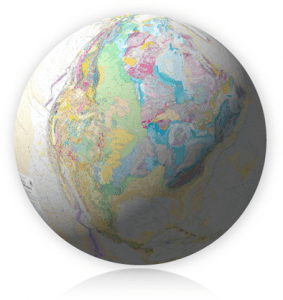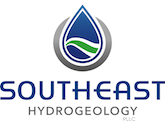 Geology is vitally important in selecting a location for a new well, determining how deep the well needs to be, estimating potential yields and identifying potential water quality problems. While some geologic maps were available digitally, until recently, we had to order paper copies of geologic maps from the U.S. Geological Survey or various State-level agencies. Now we have available to us the U.S. Geological Survey National Geologic Map Database (NGMDB) available at https://ngmdb.usgs.gov/ngmdb/ngmdb_home.html.
Geology is vitally important in selecting a location for a new well, determining how deep the well needs to be, estimating potential yields and identifying potential water quality problems. While some geologic maps were available digitally, until recently, we had to order paper copies of geologic maps from the U.S. Geological Survey or various State-level agencies. Now we have available to us the U.S. Geological Survey National Geologic Map Database (NGMDB) available at https://ngmdb.usgs.gov/ngmdb/ngmdb_home.html.
The NGMDB is broken down into four sections available from the home page: 1.) a Map Catalog with over 90,000 maps; 2.) a Stratigraphy section with information on geologic names and charts; 3.) TopoView, a downloadable historical topographic map collection; and, 4.) MapView, an online database of geologic maps for nearly the entire United States.
Of these, the far most useful is the MapView, where you can view detailed geologic mapping for nearly the entire United States (with the present exception of Maine and New Hampshire) through an online visual interface which allows you to search by zooming in to particular areas or by city, state or even address. Searching is also available by map scale, map name or even key word. To facilitate finding an exact location, there is an option to control the level of opacity can be controlled to view the topographic map underlying the geologic map overlay.
Once the appropriate area is located and the geologic map is showing, based on the filters selected, there are controls to identify all the geologic publications in the view window and to identify the particular map. With the identify tool, it is possible to follow a link to more detailed information on the map which will display on a separate page. There you can view the map itself, the map key and whether the map and related information is available for download. Some maps, particularly U.S. Geological Survey maps, are often available for download in a variety of formats through the NGMDB site itself.
In TopoView, historical topographic maps ranging in age from 1884 to 2006 are available for download in KMZ (Google Earth), JPEG and GeoTIFF formats. Historical topographic maps can often reveal details that current topographic maps do not, so a review of historical topographic maps for an area can be very useful, especially in documenting changes over the years.
NGMDG is an indispensable tool when exploring for water well locations; one that saves both time and money.
